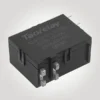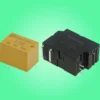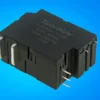As the global shift towards renewable energy accelerates, industries such as electric vehicles, solar energy storage, and smart grids are demanding more efficient and reliable control components. While traditional relays remain widely used in industrial systems, they often fall short in terms of energy efficiency and long-term stability. In contrast, the latching relays is emerging as a superior alternative—especially in new energy applications.

What Is a Latching Relay?
A latching relay, also known as a bistable relay, is a type of electromagnetic relay that retains its position after being actuated—without the need for continuous power. Once triggered by a brief pulse of current, it maintains its state (either ON or OFF) until it receives another pulse in the opposite direction.
This key feature allows latching relays to operate with ultra-low power consumption, making them ideal for power-sensitive systems.
Typical Applications of Latching Relays in New Energy Fields
- EV Charging Stations
Latching relays are widely used to control the main circuit of EV chargers. They reduce standby power usage and enhance system response. - Solar Energy Storage Systems
In photovoltaic inverters and energy storage systems, latching relays serve as critical switches for isolation and control, ensuring safety and reliability. - Smart Meters and Circuit Breakers
These relays enable remote disconnection or reconnection of power, allowing for efficient remote management and energy savings.
Key Advantages of Latching Relays
- Ultra-Low Power Consumption
Only a short pulse is needed to change the state—no continuous coil power required during standby. - High Reliability
State is maintained even during power loss, making them ideal for systems requiring memory retention. - Long Service Life
Minimal mechanical wear due to the use of magnetic holding technology, resulting in extended operational life. - High Safety Standards
Excellent isolation and robust contact design make them suitable for high-voltage, high-power applications.
How to Choose the Right Latching Relay
When selecting a latching relay, consider the following specifications:
- Rated voltage and current
- Contact configuration (1A, 1B, 1C, etc.)
- Dielectric strength and insulation resistance
- Coil type (single coil / dual coil)
- Mounting method (PCB, screw terminal, socket, etc.)
It’s recommended to choose latching relays from certified relay manufacturers with CE, UL, or TÜV compliance to ensure quality and compatibility.
Conclusion
In the pursuit of energy efficiency and system reliability, latching relays are becoming the go-to solution for modern energy systems. With their unique design and performance advantages, they are helping to drive the transformation of clean energy technologies. If you’re seeking high-performance latching relays for your application, contact us today for technical support and product recommendations.




